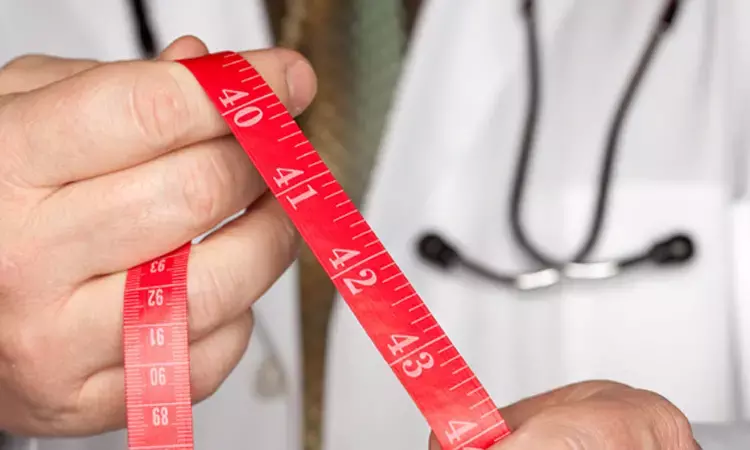- Home
- Medical news & Guidelines
- Anesthesiology
- Cardiology and CTVS
- Critical Care
- Dentistry
- Dermatology
- Diabetes and Endocrinology
- ENT
- Gastroenterology
- Medicine
- Nephrology
- Neurology
- Obstretics-Gynaecology
- Oncology
- Ophthalmology
- Orthopaedics
- Pediatrics-Neonatology
- Psychiatry
- Pulmonology
- Radiology
- Surgery
- Urology
- Laboratory Medicine
- Diet
- Nursing
- Paramedical
- Physiotherapy
- Health news
- Fact Check
- Bone Health Fact Check
- Brain Health Fact Check
- Cancer Related Fact Check
- Child Care Fact Check
- Dental and oral health fact check
- Diabetes and metabolic health fact check
- Diet and Nutrition Fact Check
- Eye and ENT Care Fact Check
- Fitness fact check
- Gut health fact check
- Heart health fact check
- Kidney health fact check
- Medical education fact check
- Men's health fact check
- Respiratory fact check
- Skin and hair care fact check
- Vaccine and Immunization fact check
- Women's health fact check
- AYUSH
- State News
- Andaman and Nicobar Islands
- Andhra Pradesh
- Arunachal Pradesh
- Assam
- Bihar
- Chandigarh
- Chattisgarh
- Dadra and Nagar Haveli
- Daman and Diu
- Delhi
- Goa
- Gujarat
- Haryana
- Himachal Pradesh
- Jammu & Kashmir
- Jharkhand
- Karnataka
- Kerala
- Ladakh
- Lakshadweep
- Madhya Pradesh
- Maharashtra
- Manipur
- Meghalaya
- Mizoram
- Nagaland
- Odisha
- Puducherry
- Punjab
- Rajasthan
- Sikkim
- Tamil Nadu
- Telangana
- Tripura
- Uttar Pradesh
- Uttrakhand
- West Bengal
- Medical Education
- Industry
waist-calf circumference ratio best indicator for predicting mortality among elderly

The waist-calf circumference ratio is the best indicator for predicting mortality among the elderly suggests a new study published in the BMC Public Health.
Waist circumference (WC), calf circumference (CC), and body mass index (BMI) have been independently linked to mortality. However, it's not yet clear how the waist-calf circumference ratio (WCR) relates to mortality. This study aims to investigate the relationship between WCR, WC, CC, and BMI with all-cause and cause-specific mortality in older adults.
In the 2014 Chinese Longitudinal Healthy Longevity Survey, 4627 participants aged 65 years and older were included, and they were subsequently followed up in 2018. Cox proportional hazards models were utilized to estimate hazard ratios (HRs) and 95% confidence intervals (CIs) for all-cause and cause-specific mortality, based on WCR, WC, CC, and BMI.
Results
During a median follow-up of 3.4 years, 1671 deaths (36.1%) occurred. Compared to the second quartile of WCR, the highest quartile had a higher risk of mortality from all causes (HR 1.42, 95%CI 1.24–1.64), cardiovascular disease (CVD) (HR 1.88, 95%CI 1.38–2.56), and other causes (HR 1.37, 95%CI 1.15–1.63). The first and fourth quartiles of WC had HRs of 2.19 (1.00–4.79) and 2.69 (1.23–5.89), respectively, for cancer mortality. The highest quartile of CC was associated with a lower risk of all-cause and other-cause mortality, whereas the lowest quartile was associated with a higher risk of all-cause, CVD, and other-cause mortality compared to the second CC quartile. Additionally, the lowest quartile of BMI was associated with a higher risk of all-cause and respiratory disease mortality. Interaction analyses showed that the effects of CC on all-cause and CVD mortality were more pronounced in adults aged ≥ 80 years (P-interaction < .05).
Higher WCR and lower CC increased the risk of all-cause, CVD, and other-cause mortality. Lower BMI was associated with higher all-cause and respiratory disease mortality risk, while WC only predicted cancer mortality
Reference:
Dai, M., Xia, B., Xu, J. et al. Association of waist-calf circumference ratio, waist circumference, calf circumference, and body mass index with all-cause and cause-specific mortality in older adults: a cohort study. BMC Public Health 23, 1777 (2023). https://doi.org/10.1186/s12889-023-16711-7
Keywords:
waist-calf, circumference, ratio, best, indicator, predicting, mortality, among, elderly, BMC Public Health, Dai, M., Xia, B., Xu, J.
Dr. Shravani Dali has completed her BDS from Pravara institute of medical sciences, loni. Following which she extensively worked in the healthcare sector for 2+ years. She has been actively involved in writing blogs in field of health and wellness. Currently she is pursuing her Masters of public health-health administration from Tata institute of social sciences. She can be contacted at editorial@medicaldialogues.in.
Dr Kamal Kant Kohli-MBBS, DTCD- a chest specialist with more than 30 years of practice and a flair for writing clinical articles, Dr Kamal Kant Kohli joined Medical Dialogues as a Chief Editor of Medical News. Besides writing articles, as an editor, he proofreads and verifies all the medical content published on Medical Dialogues including those coming from journals, studies,medical conferences,guidelines etc. Email: drkohli@medicaldialogues.in. Contact no. 011-43720751


